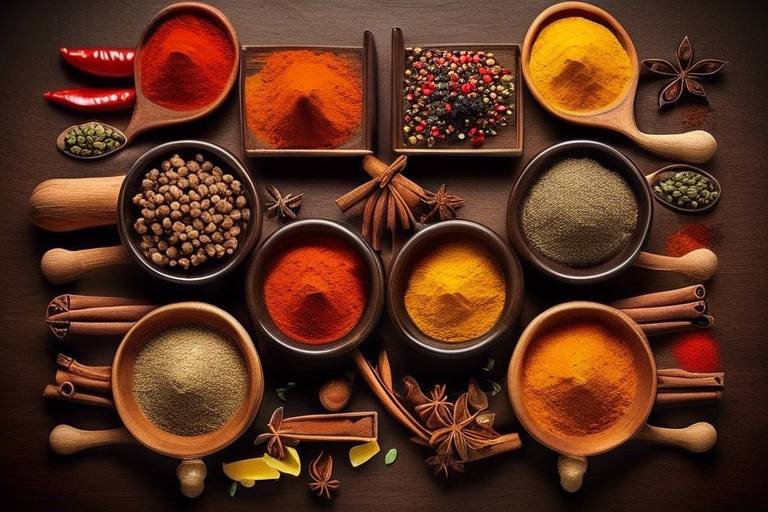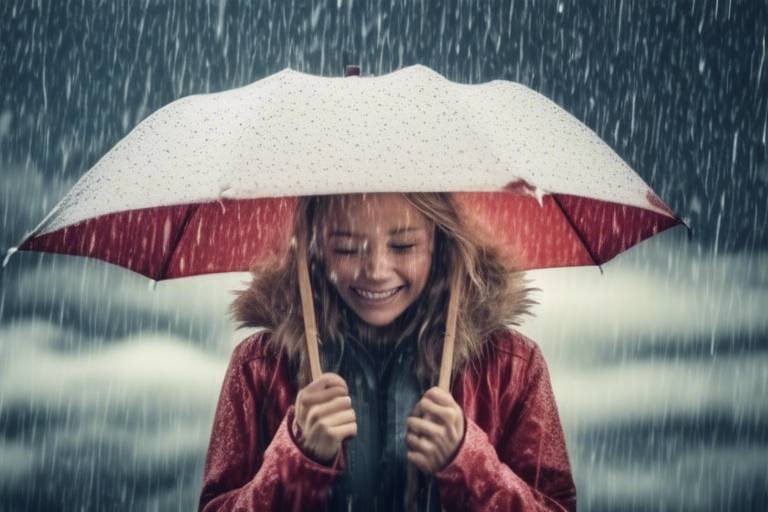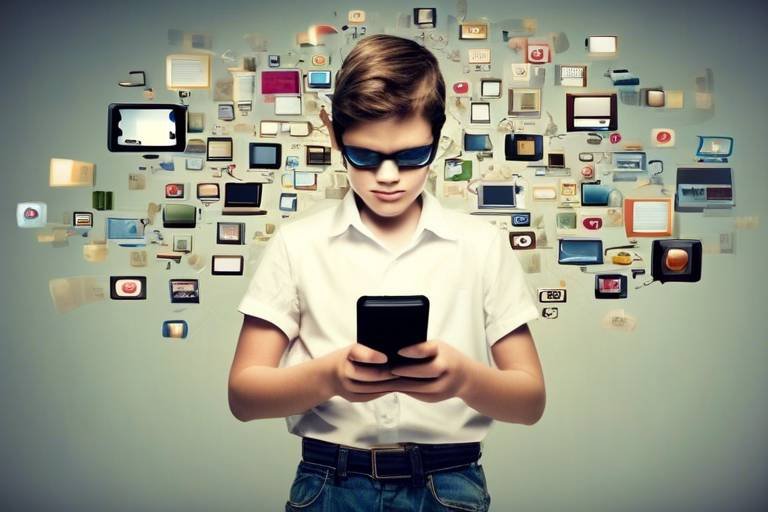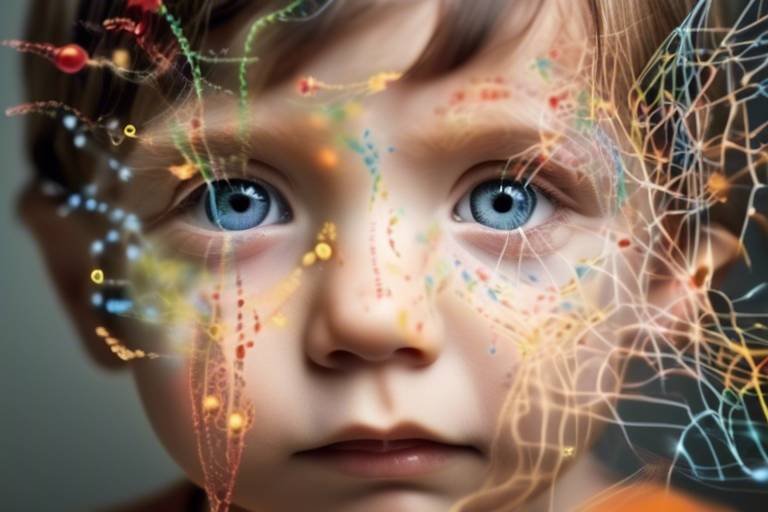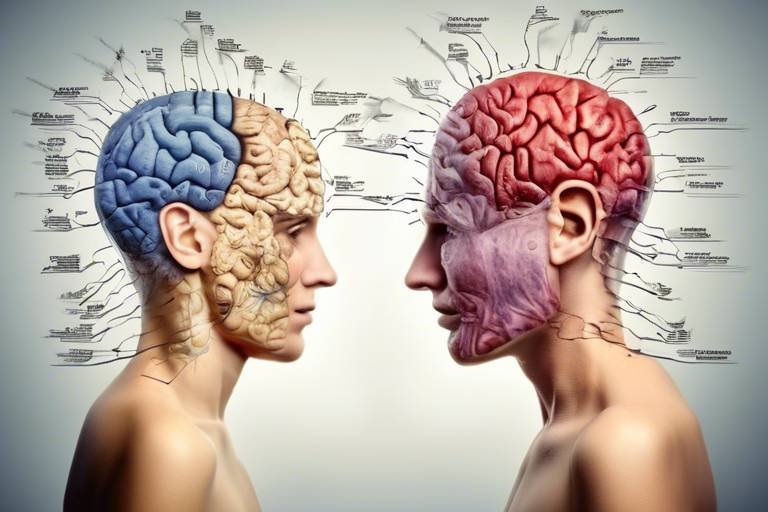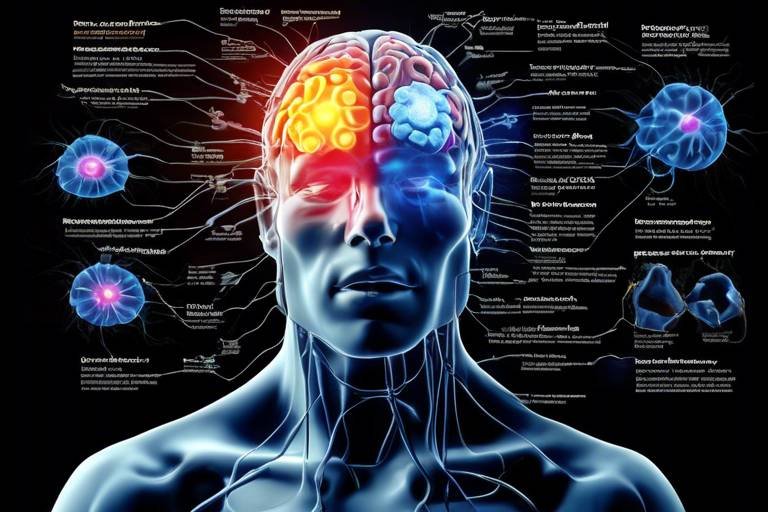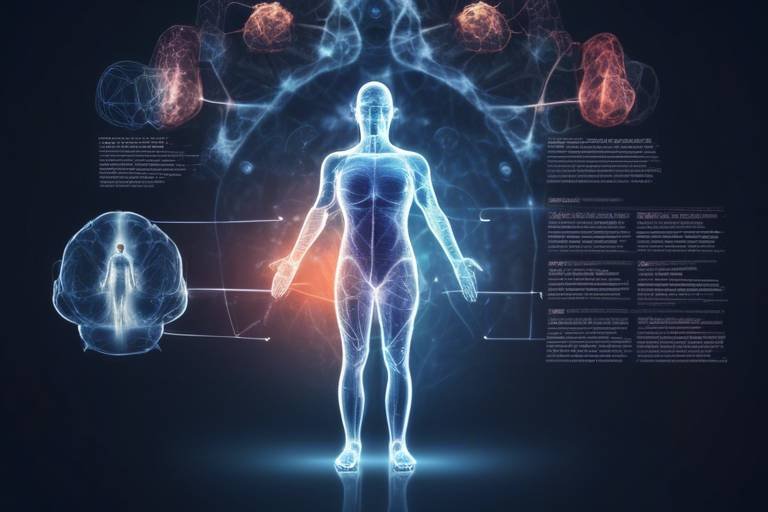How Cultural Celebrations Influence Community Health - The Science
Cultural celebrations are more than just vibrant displays of tradition; they are powerful catalysts for enhancing community health. These events bring people together, fostering a sense of belonging and promoting well-being in ways that are often overlooked. Imagine a bustling festival filled with laughter, music, and delicious food—each element plays a crucial role in weaving the social fabric of a community. But how exactly do these celebrations contribute to a healthier society? Let’s dive into the science behind it!
Social cohesion is the glue that holds communities together, and cultural celebrations are vital in strengthening these bonds. When people gather to celebrate, they share experiences that foster relationships and build trust. This sense of belonging is essential for overall well-being, as it creates a support network that individuals can rely on. Think of it as a safety net; when community members feel connected, they are more likely to support each other during tough times, ultimately leading to better mental and physical health.
Moreover, these events often include various activities that encourage interaction, such as games, music, and dance. By participating together, community members develop a sense of unity and shared identity. This is particularly important in diverse communities, where cultural celebrations can bridge gaps between different groups, helping to foster understanding and acceptance. The more cohesive a community is, the healthier its members tend to be.
Let’s not forget about the physical benefits of cultural celebrations! Many of these events are packed with activities that promote an active lifestyle. From traditional dances to sports competitions, these gatherings encourage participants to get moving. For instance, during a vibrant festival, you might find people dancing energetically to live music or engaging in friendly sports matches. These activities not only provide a fun way to exercise but also help to instill a culture of fitness within the community.
Traditional dances are a staple of many cultural celebrations, serving as both a form of expression and a way to engage in physical activity. These dances often involve rhythmic movements that can be surprisingly vigorous. For example, the lively steps of a folk dance can get your heart pumping and your body moving, all while connecting you to your heritage. It’s like a workout disguised as a celebration!
The health benefits of dancing extend far beyond just physical fitness. Studies have shown that dancing can improve cardiovascular health, enhance flexibility, and even boost mental well-being. When you dance, your body releases endorphins, those feel-good hormones that can elevate your mood and reduce stress. This is particularly significant during cultural events, where the atmosphere is charged with joy and celebration, making it easier for participants to let loose and enjoy themselves.
Sports events during cultural celebrations also play a crucial role in promoting health. These competitions foster teamwork and camaraderie, encouraging participants to work together towards a common goal. Whether it’s a friendly soccer match or a tug-of-war, these activities not only enhance physical fitness but also strengthen community ties. When people come together to cheer for their teams, they build connections that go beyond the event itself, creating lasting friendships that contribute to a supportive community.
Food is another essential component of cultural celebrations, and it plays a significant role in promoting healthy eating habits. Traditional foods often reflect the agricultural practices and nutritional wisdom of a community. By showcasing these culinary delights during celebrations, communities can educate participants about the importance of nutrition and healthy eating. For example, a festival might feature cooking demonstrations that highlight the benefits of using local, seasonal ingredients. This not only promotes healthier choices but also helps preserve cultural heritage.
Cultural celebrations provide significant mental health benefits, acting as a balm for stress and anxiety. Participating in these events can be a joyful escape from the daily grind, allowing individuals to unwind and connect with others. It’s like hitting the refresh button on your mental state! The laughter, music, and shared experiences create an atmosphere of positivity that can enhance overall mental well-being.
Moreover, cultural events serve as platforms for establishing community support systems. During these gatherings, individuals can connect with others who share similar experiences, fostering a sense of belonging that is vital for emotional health. This network of support can be invaluable during challenging times, as people can lean on one another for encouragement and understanding.
Lastly, cultural celebrations play a crucial role in reducing social isolation. In today’s fast-paced world, many individuals find themselves feeling disconnected from their communities. However, these events create opportunities for interaction and friendship, which are essential for mental health. When people come together to celebrate, they form bonds that can lead to lasting relationships, helping to combat loneliness and isolation.
- How do cultural celebrations improve community health? Cultural celebrations foster social cohesion, promote physical activity, and enhance mental well-being, all of which contribute to better community health.
- What types of physical activities are common during cultural events? Activities such as traditional dancing, sports competitions, and group games are commonly featured in cultural celebrations, encouraging participants to stay active.
- Can cultural foods promote healthy eating? Yes! Traditional foods often highlight local ingredients and nutritional practices, educating communities about healthy eating habits.
- How do cultural celebrations help with mental health? These events create joyful experiences, reduce stress, and provide opportunities for social connections, all of which are beneficial for mental health.

The Role of Social Cohesion
Social cohesion is the glue that holds a community together, creating a vibrant tapestry of relationships that enhance overall well-being. When cultural celebrations take place, they act as a catalyst for building these essential social bonds. Imagine a colorful festival where laughter fills the air, and people from all walks of life come together to celebrate their heritage. Such gatherings foster a sense of belonging, allowing individuals to connect with one another on a deeper level. This connection is crucial, as it provides emotional support and strengthens community ties, which are vital for maintaining mental health.
During these events, people engage in shared activities, whether it’s dancing, eating traditional foods, or participating in games. These interactions help break down barriers and encourage inclusivity. For instance, a local parade may invite everyone to join in, regardless of age or background. This inclusivity not only enriches the experience but also cultivates an environment where everyone feels valued and appreciated. The more we celebrate together, the stronger our community bonds become, leading to a healthier society overall.
Moreover, cultural celebrations often highlight the importance of community values and traditions, which can significantly enhance social cohesion. When community members actively participate in preserving their cultural heritage, they foster a sense of pride and identity. This shared identity can lead to a more supportive environment where individuals are motivated to help one another. As people celebrate their unique backgrounds, they also learn to appreciate the diversity within their communities, creating a more harmonious atmosphere.
In addition to promoting relationships, cultural celebrations can also encourage volunteerism and community involvement. When individuals come together for a common purpose, such as organizing an event, they develop a sense of responsibility towards their community. This can lead to increased participation in local initiatives and a stronger commitment to improving the community’s overall health. As people work together, they build trust and create networks that can provide support during challenging times.
Ultimately, the role of social cohesion in community health cannot be overstated. It serves as the foundation for a thriving society, where individuals feel connected and supported. By participating in cultural celebrations, community members not only celebrate their heritage but also invest in their collective well-being. So, the next time you find yourself at a local festival or gathering, take a moment to appreciate the powerful role these events play in fostering social bonds and enhancing the health of your community.

Physical Activity and Cultural Events
When we think of cultural celebrations, our minds often drift to vibrant parades, lively music, and delicious food. However, one of the most significant yet often overlooked aspects of these events is the physical activity they encourage. Cultural celebrations are not just about the festivities; they are a dynamic platform for promoting health and wellness through various forms of movement. From traditional dances to community sports, these events create opportunities for individuals to engage in physical activities that can lead to healthier lifestyles.
Take a moment to imagine a bustling festival where families gather to celebrate their heritage. The air is filled with laughter, music, and the rhythmic sounds of feet dancing on the ground. In this atmosphere, people are not just passive observers; they actively participate in the joy of movement. Traditional dances, for instance, are a beautiful expression of cultural identity and serve as a fun way to get moving. These dances often require participants to engage their entire bodies, providing an excellent cardiovascular workout while simultaneously connecting them to their roots.
Traditional dances are more than just a form of entertainment; they are an integral part of many cultural celebrations. Each dance tells a story, reflects history, and brings people together. For example, the Hula dance from Hawaii not only showcases beautiful movements but also incorporates deep breathing techniques that promote relaxation and well-being. Similarly, African tribal dances often involve intricate footwork and coordination, which can significantly improve balance and agility.
Moreover, engaging in these dances allows individuals to experience a sense of belonging and community. When people dance together, they share a collective experience that fosters social bonds. This connection is vital for mental health, as it creates an environment where individuals feel supported and valued. It's fascinating how a simple act of dancing can contribute to both physical fitness and emotional well-being.
The health benefits of dancing are well-documented. Studies have shown that regular participation in dance can lead to improved cardiovascular health, increased strength, and enhanced flexibility. Additionally, dancing has been linked to better mental health outcomes, including reduced symptoms of anxiety and depression. The science behind this is quite compelling: when we dance, our bodies release endorphins, the feel-good hormones that elevate our mood and promote feelings of happiness. Cultural celebrations provide the perfect backdrop for individuals to let loose and enjoy these benefits while celebrating their heritage.
In addition to dance, cultural celebrations often feature community sports events that encourage teamwork and physical fitness. These competitions can range from traditional games, such as tug-of-war or sack races, to more organized sports like soccer or basketball. Participating in these events not only promotes physical activity but also strengthens community ties. When people come together to cheer for their teams or compete against one another, they build camaraderie and foster a sense of unity.
Such events can serve as a catalyst for lifelong fitness habits. When individuals experience the joy of movement during these celebrations, they are more likely to continue engaging in physical activities in their daily lives. It's a win-win situation: communities become healthier, and individuals gain a sense of accomplishment and belonging.
In conclusion, cultural celebrations are a treasure trove of opportunities for physical activity. Whether through traditional dances or community sports, these events encourage individuals to move, connect, and thrive together. The impact of these activities goes beyond mere physical fitness; they contribute to the overall health and well-being of the community. So, the next time you find yourself at a cultural celebration, take a moment to join in the fun—your body and mind will thank you!
- How do cultural celebrations promote physical health?
Cultural celebrations promote physical health by encouraging activities such as dancing and sports, which enhance fitness levels and overall well-being. - What are the mental health benefits of participating in cultural events?
Participating in cultural events can reduce stress, foster joy, and create a sense of community, all of which contribute positively to mental health. - Can traditional dances help with fitness?
Yes, traditional dances provide an excellent workout, improving cardiovascular health, strength, and flexibility while also connecting individuals to their cultural heritage.

Traditional Dances and Movement
When we think of cultural celebrations, one of the most vibrant and captivating elements that often comes to mind is traditional dance. These dances are not just a form of entertainment; they are a rich tapestry woven from the threads of history, community, and identity. Think of them as the heartbeat of a culture, pulsating with rhythm and spirit, inviting everyone to join in. Traditional dances allow individuals to express their cultural heritage while simultaneously promoting physical activity and social interaction.
Participating in traditional dances during cultural celebrations offers a unique opportunity to engage in movement that is both enjoyable and beneficial to our health. Whether it’s the lively steps of a folk dance or the graceful movements of a ceremonial dance, each step taken is a step towards better health. These dances often involve a variety of movements that can improve flexibility, balance, and coordination. Moreover, they can be a fantastic cardiovascular workout without the monotony of a gym session.
As we dive deeper into the world of traditional dances, we can see that they serve as a bridge connecting generations. Grandparents, parents, and children often come together to share these moments, passing down not only the dance steps but the stories and values behind them. This intergenerational bonding is crucial, as it fosters a sense of belonging and community. Just imagine a lively gathering where laughter fills the air, and the sound of feet tapping in unison creates a rhythm that resonates with the soul. It’s not just about the dance; it’s about the connections made and the memories created.
In many cultures, traditional dances are also linked to specific occasions or rituals, enhancing their significance and meaning. For instance, certain dances might be performed during harvest festivals, weddings, or religious ceremonies, symbolizing gratitude, celebration, or even healing. These movements embody the spirit of the community, uniting individuals in shared experiences. The joy of dancing together can be infectious, encouraging even the most reluctant participants to join in, breaking down barriers and fostering inclusivity.
Here’s a quick overview of some common types of traditional dances and their cultural significance:
| Type of Dance | Cultural Significance | Health Benefits |
|---|---|---|
| Folk Dance | Celebrates community heritage | Improves cardiovascular health |
| Ceremonial Dance | Marks important life events | Enhances flexibility and coordination |
| Social Dance | Encourages social bonding | Boosts mental well-being |
Ultimately, traditional dances are more than just movements; they are a celebration of life itself. They remind us of our roots, our stories, and our shared humanity. So, the next time you find yourself at a cultural celebration, don’t just stand on the sidelines. Embrace the rhythm, let the music guide you, and join in the dance. You might just discover that in moving your body, you’re also moving closer to your community and to better health.

Health Benefits of Dancing
Dancing isn't just a fun way to express yourself; it’s also a powerful tool for enhancing your health! When we think about the , we often imagine the joy it brings, but the science behind it is equally compelling. Engaging in dance can lead to significant improvements in both physical and mental well-being. For instance, studies have shown that regular participation in dance can result in better cardiovascular health, increased strength, and improved flexibility. It’s like a workout disguised as a celebration!
One of the most remarkable aspects of dancing is its ability to boost mental health. When you dance, your body releases endorphins, those feel-good hormones that can lift your mood and reduce feelings of anxiety. Imagine stepping onto the dance floor, feeling the rhythm, and letting go of your worries. It’s an exhilarating experience that not only makes you feel alive but also helps to combat stress and depression. In fact, many dance forms, such as salsa or ballroom, require you to connect with others, enhancing social interaction and community bonding.
To illustrate the multitude of health benefits, let’s break them down into a few key areas:
- Cardiovascular Health: Dancing increases your heart rate, which strengthens the heart and improves circulation.
- Weight Management: Regular dancing can help burn calories, making it an enjoyable way to maintain a healthy weight.
- Mental Sharpness: Learning new dance routines challenges your brain, enhancing cognitive function and memory.
- Coordination and Balance: The movements involved in dancing improve coordination and balance, reducing the risk of falls.
Moreover, dancing can be a social activity that brings people together, which is essential for a healthy community. Whether it’s a local festival featuring traditional dances or a community salsa night, these gatherings foster a sense of belonging. They create an environment where people can share their joy, support one another, and celebrate their cultural heritage. It’s a beautiful cycle: the more we dance, the healthier we become, both individually and as a community.
In conclusion, the health benefits of dancing extend far beyond the dance floor. It’s a holistic approach that nourishes the body, mind, and spirit. So, the next time you hear your favorite song, don’t just tap your feet—get up and dance! Your body and mind will thank you for it.
Q: Can anyone dance, regardless of age or ability?
A: Absolutely! Dancing is for everyone. There are many styles and forms that cater to different abilities and preferences. It’s all about finding what works for you and enjoying the process.
Q: Do I need to take classes to enjoy the benefits of dancing?
A: While taking classes can enhance your skills and knowledge, you don’t need formal training to reap the health benefits of dancing. Simply moving to music in your living room can be just as effective!
Q: How often should I dance to see health benefits?
A: Aim for at least 150 minutes of moderate-intensity dance per week, which aligns with general exercise recommendations. However, any amount of dancing is better than none!

Community Sports Events
Community sports events are more than just games; they are a celebration of unity and a platform for promoting health and wellness. These events often bring together people from various backgrounds, encouraging a spirit of teamwork and camaraderie. When you think about it, there's something magical about seeing neighbors come together, donning their team colors, and cheering each other on. It’s like a living tapestry of community spirit woven through the thrill of competition.
Participating in sports during cultural celebrations not only boosts physical fitness but also enhances social connections. Imagine a sunny afternoon where families gather at a local park, children running around, and adults engaging in friendly matches. This is where social bonds are strengthened, and lifelong friendships are forged. The excitement in the air is palpable, and the laughter shared during these events can be heard for miles. It's a reminder that health is not just about individual well-being, but also about the connections we cultivate with others.
Moreover, community sports events often feature a variety of activities that cater to different interests and skill levels. From soccer tournaments to traditional games unique to specific cultures, these events encourage participation from everyone, regardless of age or ability. For instance, you might find:
- Soccer Matches: Great for all ages, fostering teamwork and fitness.
- Relay Races: Encouraging families to participate together.
- Traditional Games: Such as tug-of-war or sack races, which highlight cultural heritage.
In addition to the physical benefits, these events often have a significant impact on community health by promoting active lifestyles. When individuals engage in sports, they are more likely to incorporate regular physical activity into their daily routines. This is crucial in combating health issues such as obesity and cardiovascular diseases, which are prevalent in many communities today. The excitement of these events can serve as a catalyst, inspiring participants to stay active long after the celebrations have ended.
Furthermore, community sports events can also serve as a platform for raising awareness about health issues. Organizers often take this opportunity to provide information on nutrition, fitness, and mental health resources. For example, they might set up booths offering health screenings or workshops on healthy eating. This holistic approach not only entertains but also educates, making the community stronger and healthier.
In conclusion, community sports events are a vital component of cultural celebrations, promoting not just physical health but also social cohesion and community spirit. They remind us that when we come together, we can achieve more than just winning a game; we can build a healthier, happier community.
Q: How do community sports events contribute to mental health?
A: Community sports events foster social connections, reduce feelings of isolation, and provide a sense of belonging, all of which are crucial for mental well-being.
Q: What types of sports are typically featured in community events?
A: Community events often include a variety of sports such as soccer, basketball, running races, and traditional cultural games, catering to diverse interests.
Q: How can I get involved in organizing a community sports event?
A: You can start by reaching out to local community centers, schools, or sports clubs to collaborate on organizing an event that encourages participation from all community members.

Nutrition and Cultural Foods
Cultural celebrations are a feast for the senses, and one of the most delightful aspects is undoubtedly the traditional foods that grace the tables. These culinary treasures not only reflect the rich heritage of a community but also play a crucial role in promoting healthy eating habits. When we gather to celebrate, we often share meals that are steeped in history, using ingredients that have nourished generations. This connection to our roots can inspire healthier choices and a greater appreciation for what we consume.
During these events, traditional dishes are often prepared using locally sourced ingredients, which can have numerous benefits. Not only do these foods tend to be fresher, but they also support local farmers and reduce the carbon footprint associated with transporting food over long distances. For instance, a community festival might feature a variety of dishes made from seasonal vegetables, whole grains, and lean proteins, all of which contribute to a balanced diet.
Moreover, cultural celebrations provide an opportunity to educate community members about nutrition. Workshops or demonstrations can be organized to showcase how to prepare traditional dishes in a healthier way. This can include using less oil, opting for whole grains instead of refined ones, or incorporating more fruits and vegetables into recipes. By doing so, communities can pass down not just recipes, but also knowledge about healthy eating.
Consider the following examples of traditional foods that often appear during cultural celebrations:
- Mexican Festivals: Dishes like tamales and salsas made from fresh tomatoes and avocados promote healthy fats and nutrients.
- Indian Festivals: Foods such as dal (lentils) and roti (whole wheat bread) provide essential proteins and fiber.
- Italian Celebrations: Traditional meals often include pasta made from whole grains, paired with fresh vegetables and lean meats.
In addition to the nutritional benefits, sharing meals during these celebrations fosters a sense of community and belonging. When people gather around the table, they not only share food but also stories and traditions, which can reinforce social bonds. This communal aspect of dining is vital for mental health, as it creates an environment of support and connection.
In conclusion, cultural foods are much more than just sustenance; they are a bridge that connects us to our heritage and to one another. By embracing these culinary traditions and promoting healthy eating practices during cultural celebrations, we can foster a healthier community that values both nutrition and social connection.
Q: How can cultural celebrations encourage healthy eating habits?
A: Cultural celebrations often feature traditional foods prepared with local ingredients, which can promote healthier choices and provide opportunities for education about nutrition.
Q: What role do traditional foods play in community bonding?
A: Sharing traditional meals during celebrations fosters a sense of belonging and connection, creating an environment where community members can support each other.
Q: Are there ways to make traditional dishes healthier?
A: Yes! Traditional dishes can be modified by using less oil, incorporating more vegetables, and opting for whole grains instead of refined ingredients.

Mental Health Benefits
Cultural celebrations are more than just vibrant displays of tradition; they serve as essential avenues for enhancing mental health within communities. Have you ever noticed how a festival can lift your spirits? It’s not just the music or the food; it's the connections we forge during these events that play a crucial role in our overall well-being. When people come together to celebrate, they create a tapestry of shared experiences, which in turn fosters a sense of belonging. This sense of community is vital for mental health, as it helps individuals feel less isolated and more supported.
Engaging in cultural festivities also provides a much-needed break from the daily grind. Life can be overwhelming, and sometimes all we need is a chance to unwind and enjoy ourselves with others. These celebrations create a space where laughter, joy, and connection reign supreme. They offer an escape from stressors and can significantly reduce feelings of anxiety and depression. Think of it as a mental reset button; a time to recharge our emotional batteries and return to our daily lives with renewed vigor and positivity.
Moreover, cultural celebrations often include activities that promote mental well-being, such as artistic expression, storytelling, and communal meals. These activities not only stimulate creativity but also encourage social interaction, which is essential for emotional health. For instance, when families and friends gather to prepare traditional dishes, they share stories and laughter, creating memories that strengthen bonds. This process of sharing and creating together is a powerful antidote to loneliness and can foster a deep sense of connection among participants.
Another significant aspect of these events is their ability to create community support systems. During cultural gatherings, people often find others who share similar experiences or challenges. This shared understanding can lead to the formation of support networks that provide emotional and mental health resources. For example, community members might come together to discuss mental health openly, breaking down the stigma that often surrounds these topics. By fostering an environment where individuals feel safe to share their struggles, cultural celebrations can be a catalyst for healing and growth.
The role of cultural celebrations in reducing social isolation cannot be overstated. When people participate in these events, they are not just spectators; they are part of something larger than themselves. This communal participation creates opportunities for interaction and friendship, which are vital for mental health. In our fast-paced world, it’s easy to feel disconnected, but cultural celebrations remind us of our shared humanity. They encourage us to reach out, connect, and build relationships that can last a lifetime.
To sum it up, the mental health benefits of cultural celebrations are profound and multifaceted. They provide a platform for emotional expression, create supportive networks, and reduce feelings of isolation. By participating in these vibrant events, individuals can enhance their mental well-being and contribute to a healthier, more connected community. So, the next time you find yourself at a cultural festival, take a moment to appreciate the mental health benefits it brings—not just to you, but to everyone around you.
- What types of cultural celebrations are most beneficial for mental health?
Any cultural celebration that encourages community participation, such as festivals, parades, or traditional gatherings, can be beneficial for mental health.
- How can I get involved in cultural celebrations in my community?
Check local event calendars, community centers, or social media platforms for upcoming cultural events. Volunteering is also a great way to get involved.
- Are there specific activities during these celebrations that promote mental health?
Yes, activities such as dancing, communal meals, and storytelling are known to enhance social interactions and emotional well-being.

Community Support Systems
When we think about cultural celebrations, we often picture vibrant parades, delicious food, and lively music. However, one of the most significant yet often overlooked aspects of these events is their ability to create . These gatherings act as a catalyst for building connections, fostering relationships, and establishing networks that can provide emotional and mental health support to community members. Imagine a tapestry woven from the threads of shared experiences, where each thread represents an individual’s story, struggles, and triumphs. Cultural celebrations are the loom that brings these threads together, creating a strong and resilient fabric of community.
During these events, individuals find a sense of belonging that transcends the ordinary. They are not just participants; they become part of a larger narrative that values their contributions and recognizes their struggles. This sense of belonging is crucial, especially in today’s fast-paced world where many feel isolated and disconnected. By coming together to celebrate, people can share their joys, challenges, and aspirations, creating an informal support network. This network can be particularly beneficial for vulnerable populations, such as the elderly or newcomers, who may feel marginalized or disconnected from the broader community.
Furthermore, cultural celebrations often include activities that encourage dialogue and interaction. For instance, workshops, storytelling sessions, and community discussions allow individuals to voice their concerns and share their experiences in a safe environment. These platforms not only empower individuals but also create a sense of collective responsibility towards one another, reinforcing the idea that “we are in this together.” As people engage with one another, they build trust and understanding, which are essential components of a supportive community.
To illustrate the impact of community support systems fostered by cultural celebrations, consider the following table that highlights various ways these events contribute to mental health:
| Aspect | Impact on Mental Health |
|---|---|
| Social Interaction | Reduces feelings of loneliness and isolation. |
| Shared Experiences | Fosters empathy and understanding among community members. |
| Emotional Support | Provides a platform for sharing struggles and receiving encouragement. |
| Sense of Belonging | Enhances feelings of acceptance and worth within the community. |
In essence, cultural celebrations are more than just festivities; they are vital lifelines that connect individuals and strengthen community ties. They create a nurturing environment where people feel valued and supported. When individuals come together to celebrate their heritage, they also celebrate their shared humanity, paving the way for a healthier, more resilient community.
- How do cultural celebrations promote mental health?
Cultural celebrations foster social connections, reduce isolation, and provide emotional support, all of which contribute to improved mental health. - What types of activities during cultural events support community building?
Activities such as workshops, storytelling, and group discussions encourage interaction and strengthen community bonds. - Can anyone participate in cultural celebrations?
Absolutely! Cultural celebrations are typically open to everyone, regardless of background, and are a great way to learn and connect with others.

Reducing Social Isolation
In today's fast-paced world, social isolation has become a pressing issue that affects many individuals, particularly the elderly and those living in urban environments. Cultural celebrations serve as a powerful antidote to this growing concern. When communities come together to celebrate their heritage, they create a vibrant tapestry of interaction and connection that helps to bridge the gap between individuals. These events offer a unique opportunity for people to engage with one another, share experiences, and foster new friendships.
Imagine a bustling festival filled with laughter, music, and the aroma of delicious foods wafting through the air. This lively atmosphere encourages people to step out of their comfort zones and engage with others. Whether it's through dancing, participating in games, or simply enjoying a meal together, cultural celebrations provide a platform for meaningful interactions. In fact, studies have shown that individuals who participate in community events report feeling less lonely and more connected to those around them.
Moreover, these gatherings often attract a diverse group of participants, which enriches the social fabric of the community. When people from different backgrounds come together, they bring their unique perspectives, traditions, and stories. This diversity not only enhances the celebration but also promotes understanding and empathy among community members. As a result, cultural events can break down barriers and create lasting bonds, making everyone feel included and valued.
To illustrate the impact of cultural celebrations on reducing social isolation, consider the following points:
- Creating Shared Experiences: Participating in cultural events allows individuals to create memories together, fostering a sense of belonging.
- Opportunities for Volunteerism: Many cultural celebrations rely on volunteers, which provides a chance for individuals to connect while working towards a common goal.
- Encouraging Intergenerational Interaction: These events often bring together people of all ages, promoting relationships between younger and older generations.
Ultimately, cultural celebrations are not just about the festivities; they are about building a strong, interconnected community. By reducing social isolation, these events play a crucial role in enhancing the overall mental health of individuals. When people feel connected, they are more likely to seek help when needed, share their experiences, and support one another during difficult times. This sense of community can be a powerful force in combating loneliness and fostering resilience.
In conclusion, cultural celebrations are invaluable in creating a supportive environment where individuals can thrive. They not only reduce social isolation but also help to build a healthier, happier community. So the next time you attend a cultural event, take a moment to appreciate the connections being formed and the lives being enriched. After all, we are all in this together!
Q1: How do cultural celebrations help reduce social isolation?
A1: Cultural celebrations create opportunities for individuals to interact, share experiences, and form friendships, which helps to combat feelings of loneliness.
Q2: Are there specific activities during cultural events that promote social interaction?
A2: Yes! Activities such as dancing, group games, and communal meals encourage people to engage with one another and foster connections.
Q3: Can cultural celebrations benefit mental health?
A3: Absolutely! By promoting social connections and a sense of belonging, cultural celebrations can significantly improve mental well-being.
Frequently Asked Questions
- How do cultural celebrations improve community health?
Cultural celebrations enhance community health by fostering social bonds, encouraging physical activity, and promoting mental well-being. When people come together to celebrate, they build relationships that create a supportive environment, which is crucial for overall health.
- What role does social cohesion play in community health?
Social cohesion is essential for community health as it helps to create a sense of belonging among individuals. When people feel connected to their community, they are more likely to support one another, participate in activities, and engage in healthy behaviors, which all contribute to better health outcomes.
- Can dancing during cultural events really improve physical health?
Absolutely! Dancing is not just a fun activity; it’s a fantastic way to get moving and improve cardiovascular health. Traditional dances often involve vigorous movements that can help participants stay fit while also preserving their cultural heritage.
- What are the mental health benefits of participating in cultural celebrations?
Participating in cultural celebrations can significantly reduce stress and anxiety. These events foster joy and provide opportunities for social interaction, which are vital for mental well-being. Being part of a community celebration can uplift spirits and create lasting friendships.
- How do cultural foods promote healthy eating habits?
Cultural celebrations often showcase traditional foods that can introduce communities to healthier eating practices. By educating participants about the nutritional value of these foods, these events encourage healthier choices and a better understanding of nutrition.
- What impact do community sports events have on health?
Community sports events are a great way to promote physical fitness and teamwork. They encourage individuals to engage in physical activity while also strengthening community ties, making fitness a fun and collective effort.
- How can cultural celebrations help reduce social isolation?
Cultural celebrations bring people together, creating a sense of community that can combat feelings of loneliness. These events provide opportunities for interaction and friendship, which are essential for mental health and emotional support.
- Are there specific health benefits linked to traditional dances?
Yes! Traditional dances not only serve as a means of cultural expression but also offer various health benefits, including improved cardiovascular fitness, enhanced coordination, and increased flexibility. Plus, they are a joyful way to engage with others!


